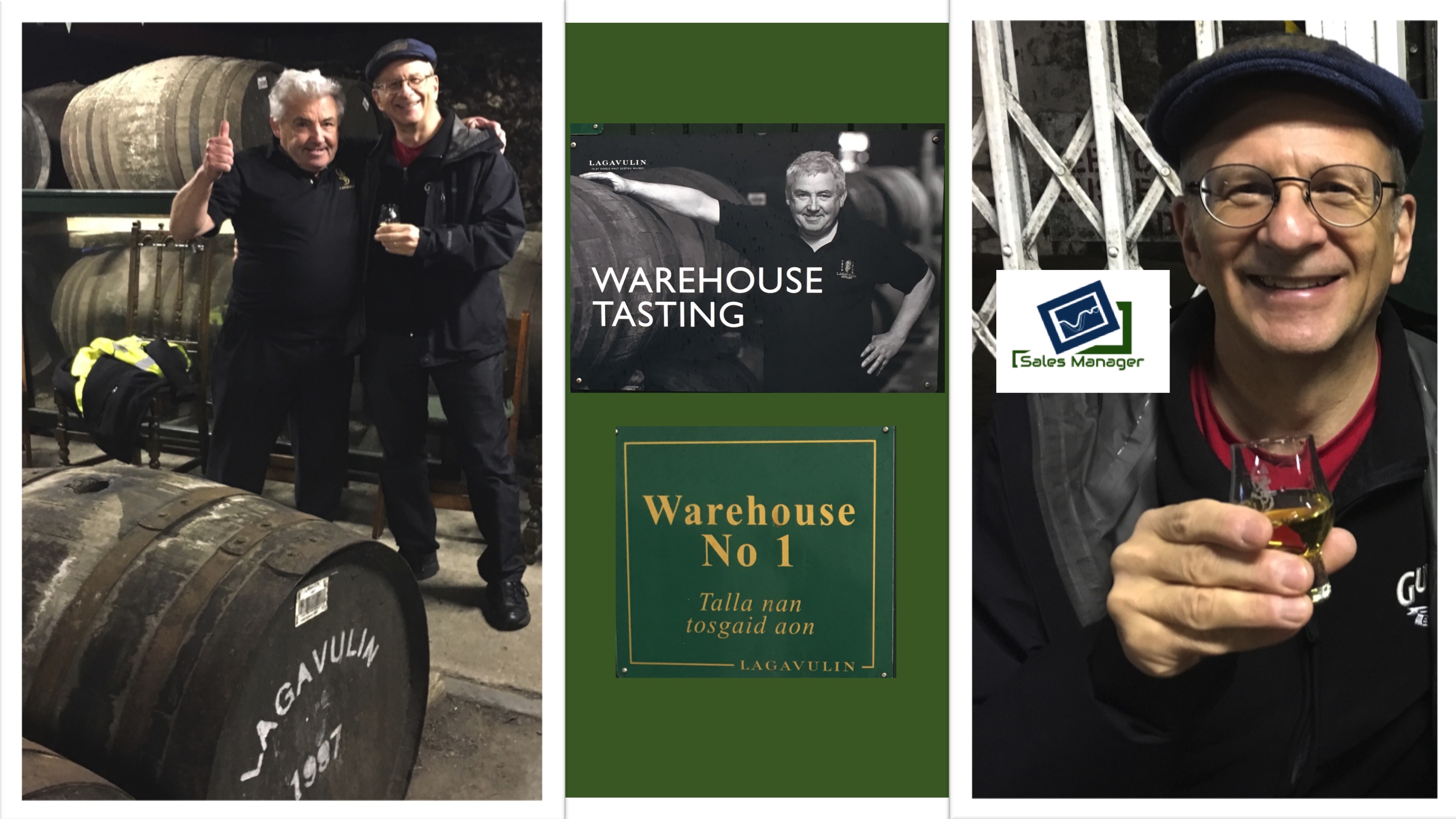
Making single malt scotch and making a great sales upsystem (software to assign salespeople to customers) have many similarities. To create the final product, both require years of patience, trying different strategies, monitoring the status and constantly tweaking the process. Yet both final products can be easily enjoyed by the customer - scotch is just poured and savored; a great upsystem is just turned on and used.
Scotch whisky
I have been fascinated with single malt scotch for the last 25 years - since I met a member of the Scotch Malt Whisky Society who convinced me to buy my first bottle. I learned that the first recorded Scottish distillation was in 1494. All these centuries of perseverance are amazing. And each new bottling requires waiting years or decades to discover if changes to the process have improved or degraded the whisky! Which companies today invest so much time in development? To learn more, two years ago I visited distilleries in Islay - the home to the most famous peated whiskies. There are hundreds of whisky distilleries in Scotland, each with a distinctive taste. Whisky in Scotland legally contains only barley, yeast and water. So how are there so many varieties that taste so good and are so different? It’s actually pretty simple when you think about it: 1. Create malt - soak barley in water for several days, then dry by optionally burning peat to add smokey flavor 2. Create wort - grind malt and add hot water to extract sugar 3. Create alcohol - add yeast to wort, in several days get beer-like liquid called 'wash', which is 5-7% ABV (Alcohol by volume). 4. Distill alcohol - Heat 'wash' in 'pot-stills' for several hours to distill to 60-80% ABV, called 'spirits'. 5. Mature alcohol - put 'spirits' in oak casks (new casks or recycled American bourbon or sherry casks) for at least 3 years. Sometimes up to 50 years! 6. Bottle whisky So in a nutshell, the main differences are due to using peat for drying, design of pot-stills, types of oak casks used, and for how long whisky is matured.
Sales upsystem
Sales upsystems similarly seem quite simple, but each system is quite different. A great upsystem must receive accurate information of sales activities to perform real-world modeling. In other words, the information entered into an upsystem has to match the real-world activities on the salesfloor (not just what people believe to occur there). The art is to find a balance between a simple interface to use with little functionality or a more complex interface that handles all retail sales scenarios. We worked very hard in collaboration with sales people to create a simple interface that handles more than 99% of retail scenarios. The devil is in the details.
To understand some of the complexities, let's look at the following scenario. A customer enters the store and is greeted by salesperson Jim, the salesperson who was next in line in the rotation to welcome a customer. After a few minutes, Jim realizes that the customer was previously served by salesperson Lisa. This customer is what we call a 'beback'. So Jim contacts Lisa, who takes this customer, and Jim gets back in the sales rotation to get the next customer (i.e. he does not lose his place in the rotation). This is a simple example that is modeled in SaM exactly as described previously. SaM is unique in allowing salespeople to record all activities in real-time, and always provide an accurate count of customers, sales-engagements, customer purchases by salesperson and many more metrics that will support business owners decision making.
Additionally, SaM properly handles a salesperson taking someone else's beback (i.e. customer requests a salesperson that is not currently available). And of course, we generate 'beback reports' so salespeople know when others see their customers. SaM also supports salespeople taking short or long breaks from work, and breaks that are work-related or personal. It displays the real-time information that salespeople need to maximize their success. Consequently, subtle changes in sales strategies can be detected so one can continually improve and increase revenues.
SaM - the ultimate upsystem, was developed by observing real-life sales scenarios. SaM helps salespeople, managers and owners to make insightful decisions to increase revenues. This yields happier customers, higher revenues and profits, and more successful salespeople.